After having bought my first real full-size LED light, it was just a matter of time before I needed a second one to help me shape some light and try to make some stunning images.
To complement my 500-watt bicolor light, I needed something lighter and easier to carry around. The Nanlite Forza 60 B II felt like the perfect choice as a second light.
We’ll see in this review if this small light is indeed something you should consider.
Introduction
Before reading this review, I would highly suggest you read my in-depth review of the Nanlite Forza 500 B II.
I will try to avoid repeating myself every time I review a light, so if you want to learn everything about the basics of LED lights and cinematic lights in general, you should take a look at the article.
As I previously mentioned in the introduction, this is the second LED light I am getting. Having one light is quite limited for illuminating a scene.
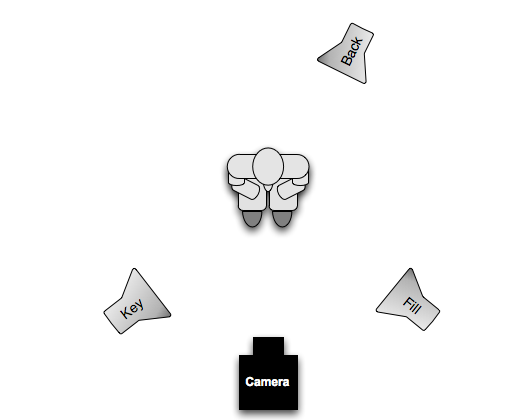
Just for an interview setup; you generally need 3 to 4 lights:
- The key light
- The fill light
- The hair light
- The background light is optional.
A scene doesn’t necessarily have to be that formal when it comes to lighting. On the other hand, if you want to add dimension and architecturality to a commercial video, you must create what we call a checkerboard or, at the very least, pockets of lights.
Why choose Nanlite?
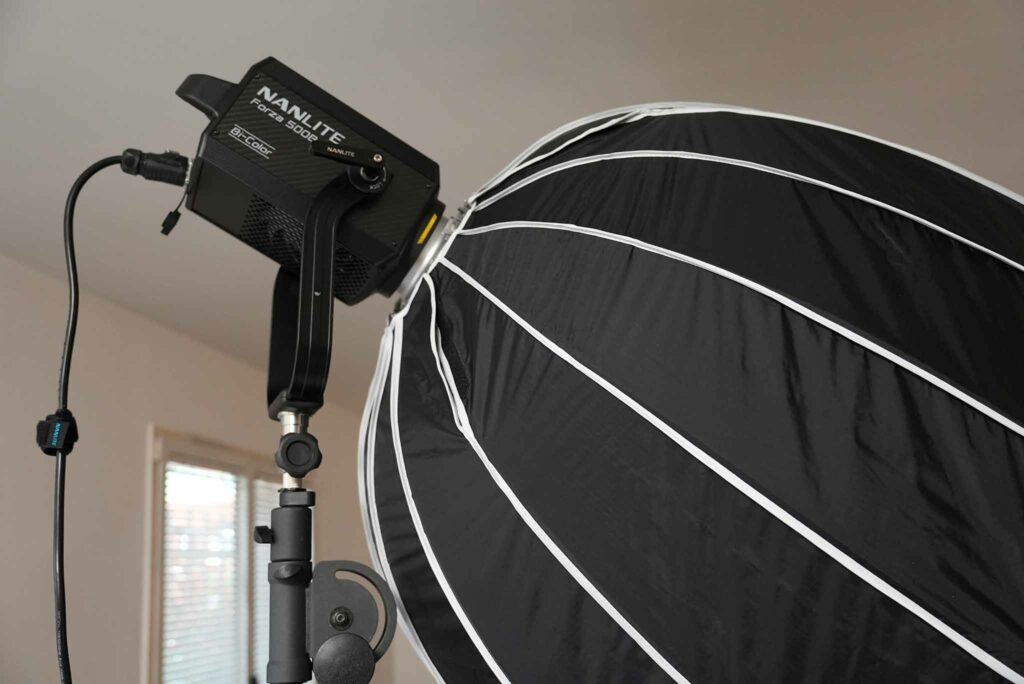
Nanlite is the brand I went to because of a film maker named Jacques Crafford. I found the visuals of his work to be quite striking, and I tend to know that when it comes to gear, it’s better to judge based on the results than the numbers.
The only other option I was considering was Aputure, which is, for me, the best value for money for small productions like ours.
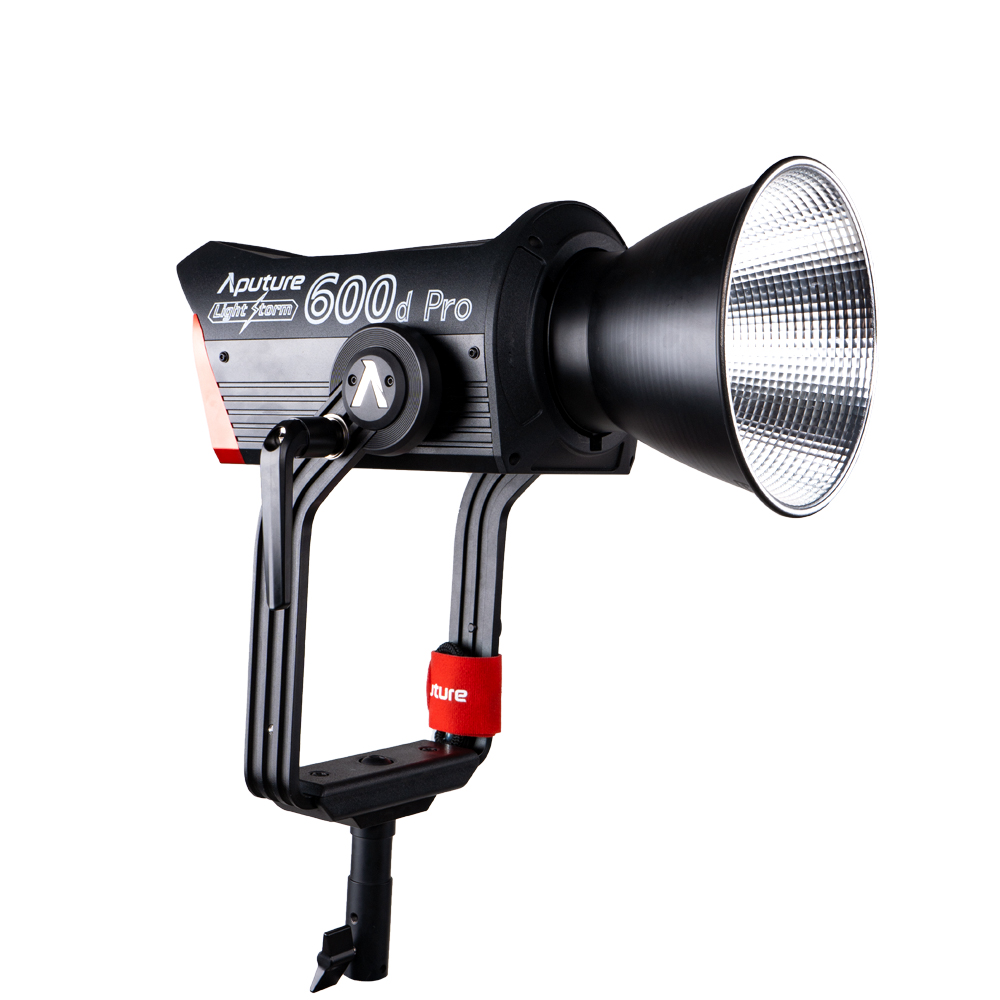
Aputure is actually the gold standard in this market, and their products are overall more refined than Nanlite.
The reasons why I chose Nanlite were that the bi-color options are more affordable and deliver a very similar level of quality. I got my Nanlite Forza 500B II in promotion for 1200 euros HT. The Aputure 600x Pro cost 1,879 euros HT. That’s quite a difference that is very hard to justify.
I would rather have more lights than one light that is substantially better, which is not necessarily the case.
The Aputure LS 60X is 399 euros HT, whereas the Nanlite 60B II is 299 euros HT. The Nanlite is lighter, has an optional fresnel and projection attachment, has built in DMX, and has a streamlined design that fits with the larger models.
Why choose the Nanlite Forza 60B II?
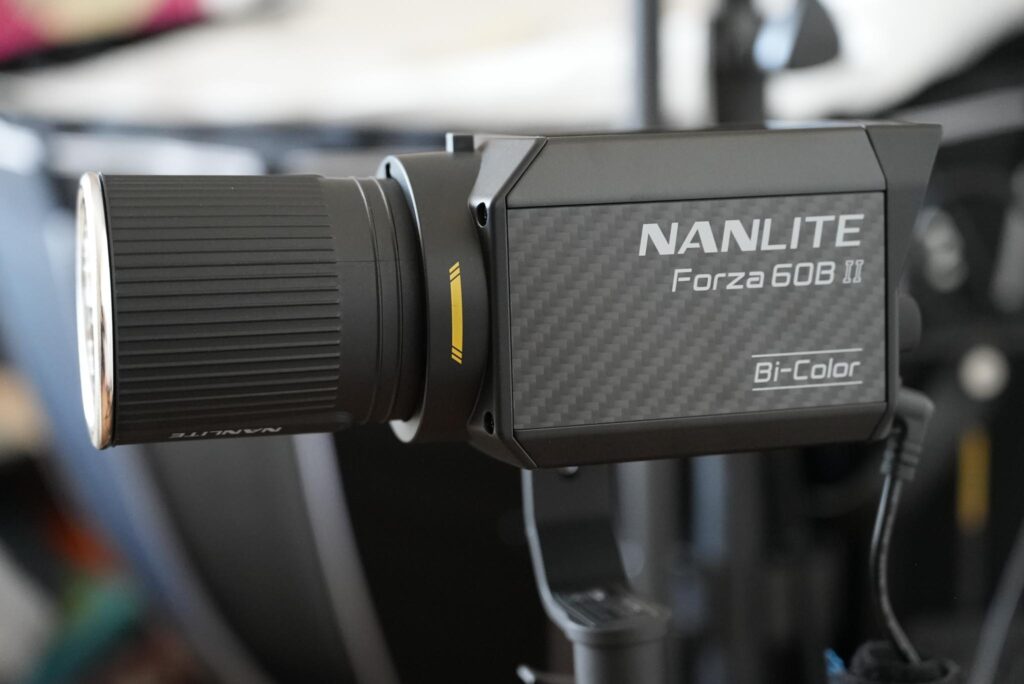
The Nanlite Forza 60B II is a bi-color, 60-watt LED light. This is basically the smallest model in the Forza lineup, which means it is also the lightest and easiest to manipulate and carry around.
Even though it is the smallest, it packs quite a punch, with up to 14090 lux at 1 meter and 1381 lux at 3 meters.
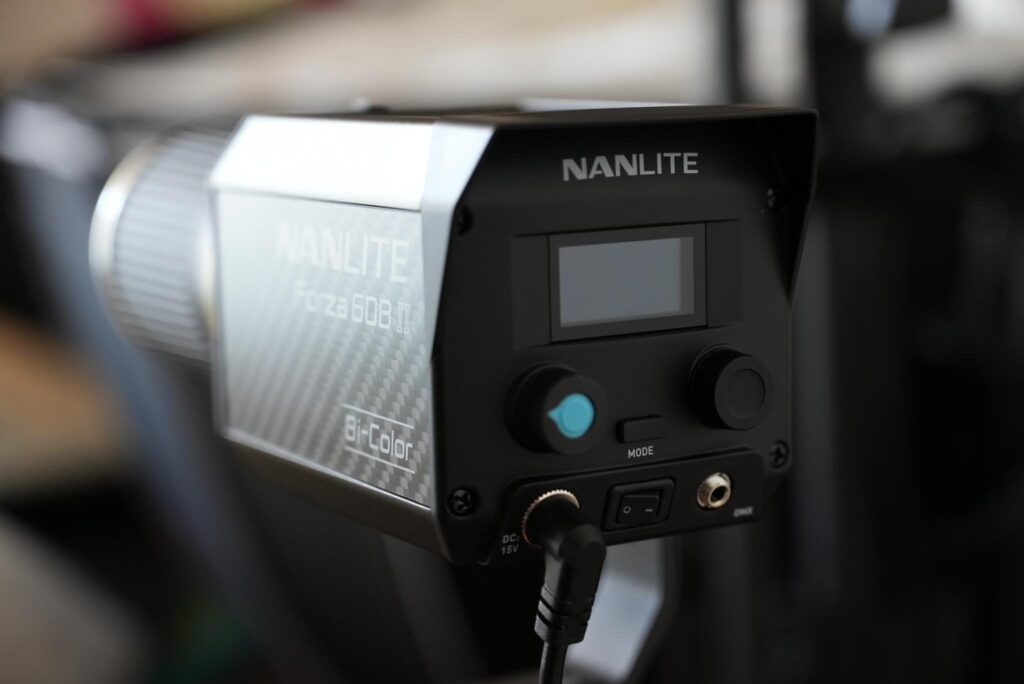
What sealed the deal for me was that this light has enough power to be shot through a 90-cm softbox and act as a key light. This means that it has more than enough as a fill or with the reflective bowl to be used as a hair light or even as a projection.
For this size and weight, it’s hard to be more polyvalent. The only thing you won’t be able to do with this light is mimic the sunlight from outside a house or compete with the sunlight on a very bright day.
My review of the Nanlite Forza 60B II
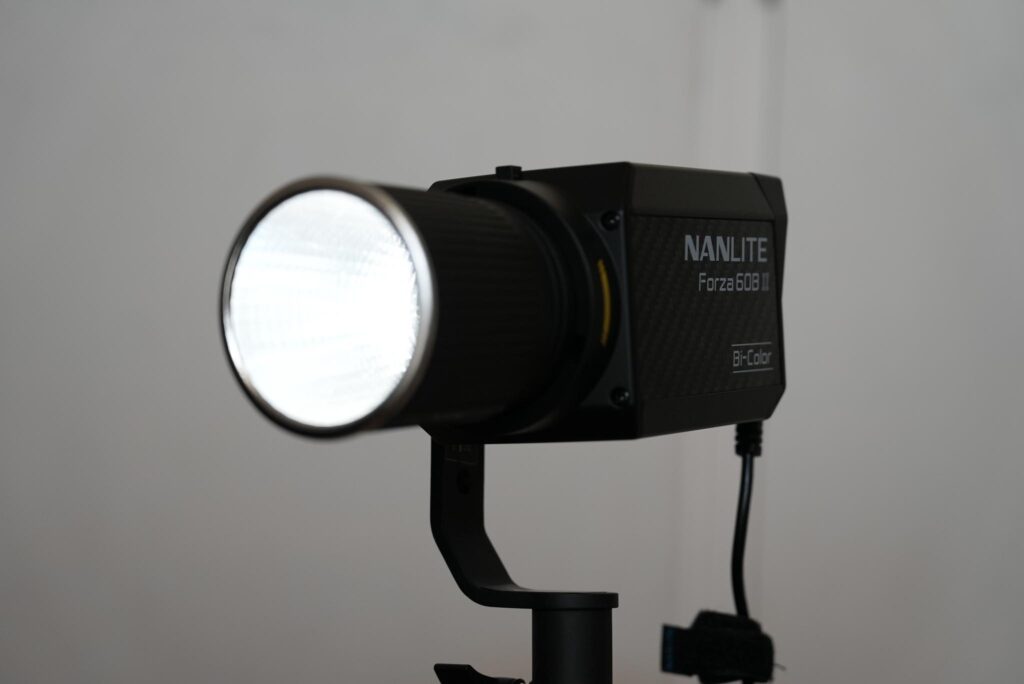
My first light was a Nanlite 500B II, so when this 60-watt light arrived, I was astonished by its size. It’s literally smaller than the palm of my hand and not too far from a DSLR flash in terms of length.
The weight is also very light. I was originally planning to bring the 500B II on set in backpack mode, but honestly, now I can tell you that this model is so much more adapted to be carried handheld as long as the 60 cm softbox.
What comes inside the box?
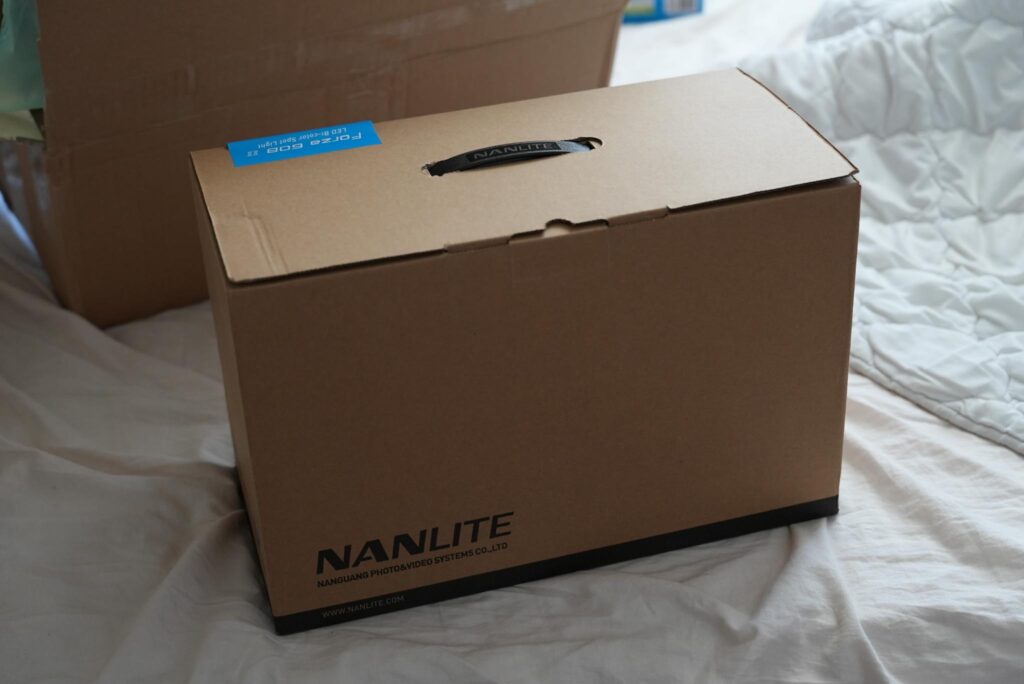
You basically have the typical light bag that you would get from an LED light, but in a much smaller version. Being a lower wattage, the alimentation is much smaller and lighter. It’s comparable to the one you would get for a laptop.
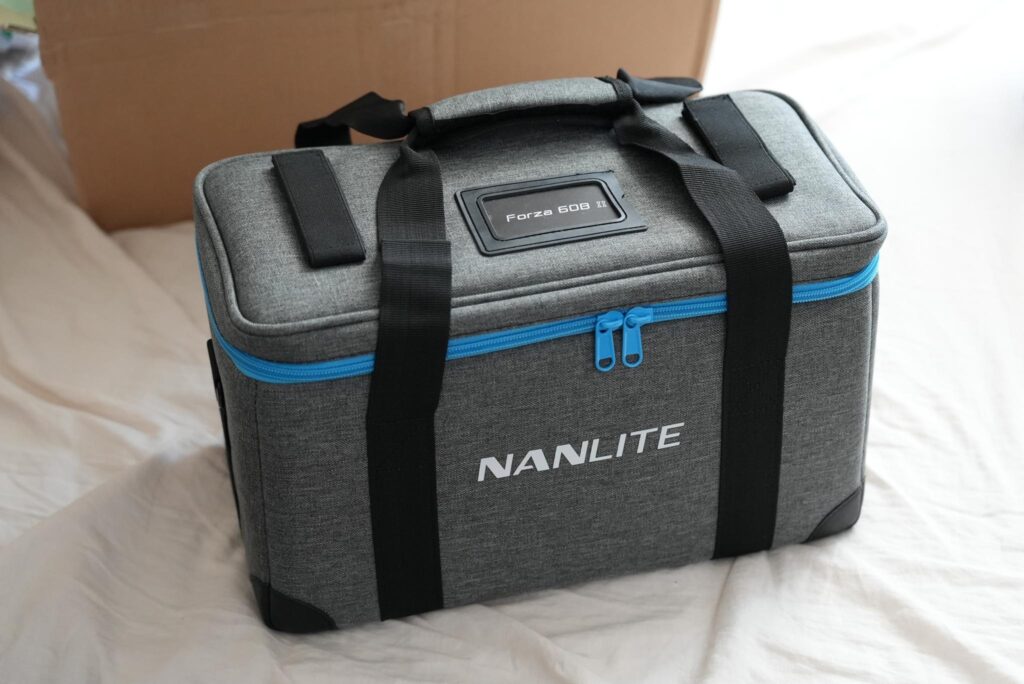
The bag comes with a light and a bunch of accessories, such as the included reflector, which is smaller in this version compared to the 60B.
It also has a handle grip to hold the light handheld and to power it with two Sony NP-F batteries. They also include a Bowens adaptator for you to use your Bowens Nanlite modifiers.
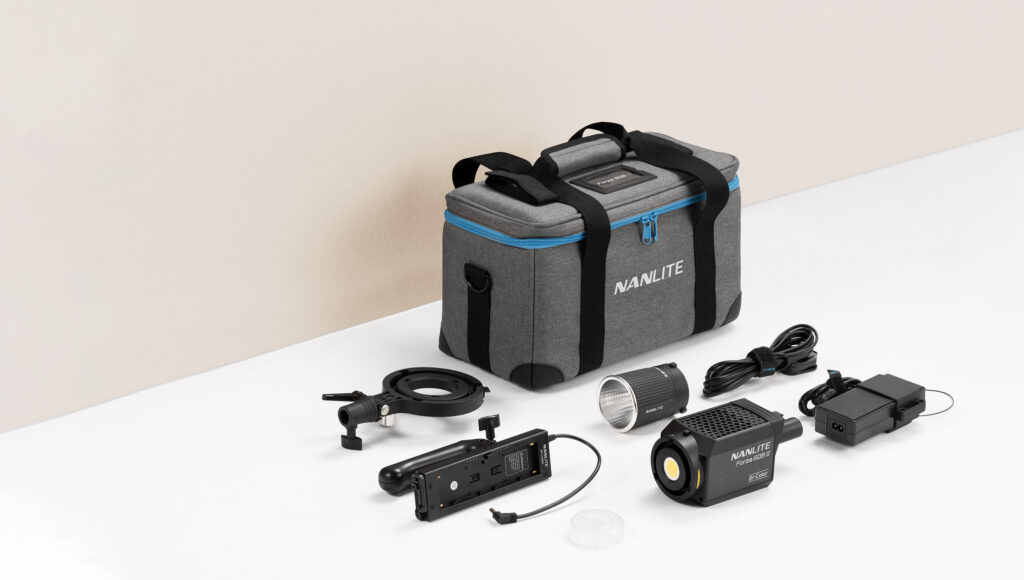
The light comes with a FM mount since the light is smaller than the diameter of a Bowens mount.
How is the build quality?
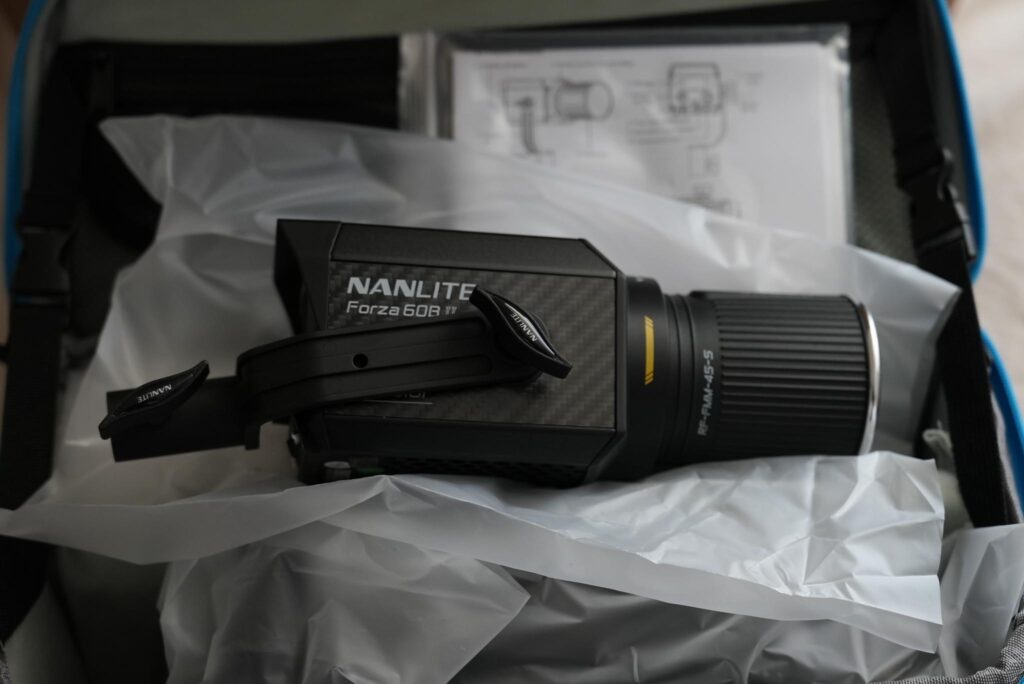
If the Forza 500B II was built like a tank, this tiny Forza 60B II is decently built. It has metal parts, but most of it is plastic.
That makes sense since, at the end of the day, this is a portable light that has to be nimble and easily manipulated.
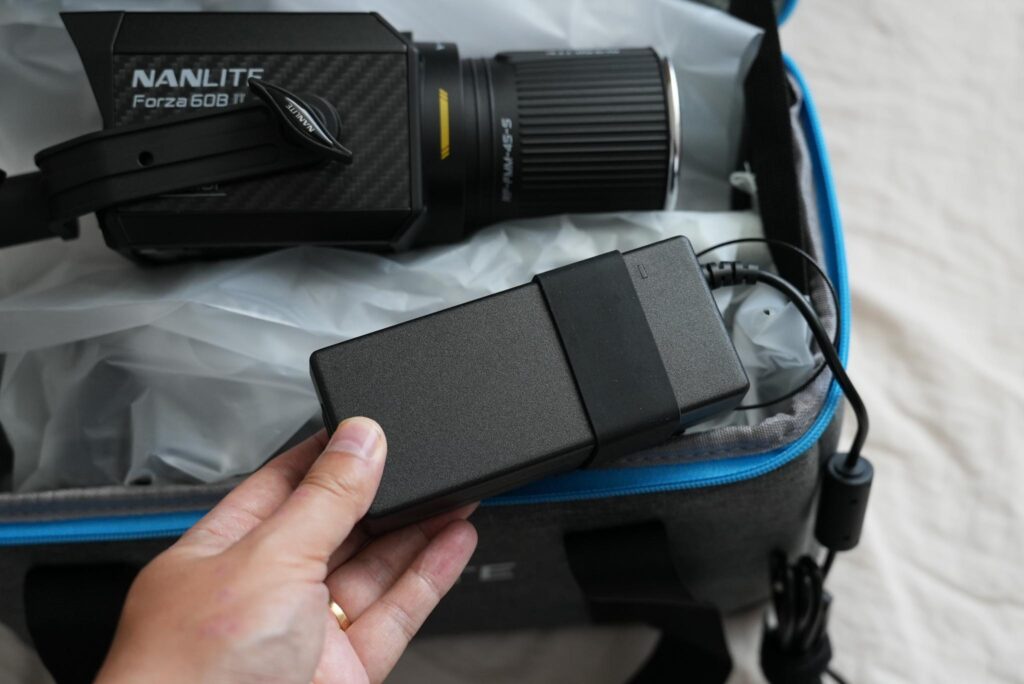
The plastic came with some wear; I think the unit was brand new, but with Nanlite, the products are manufactured in China, and the level of detail is not on par with Aputure, hence the cheaper price.
Other than that, I think this product looks quite nice and fits well with other Forza models. The knobs are quite plasticky, but the ones from the 500B II are probably made of the same materials.
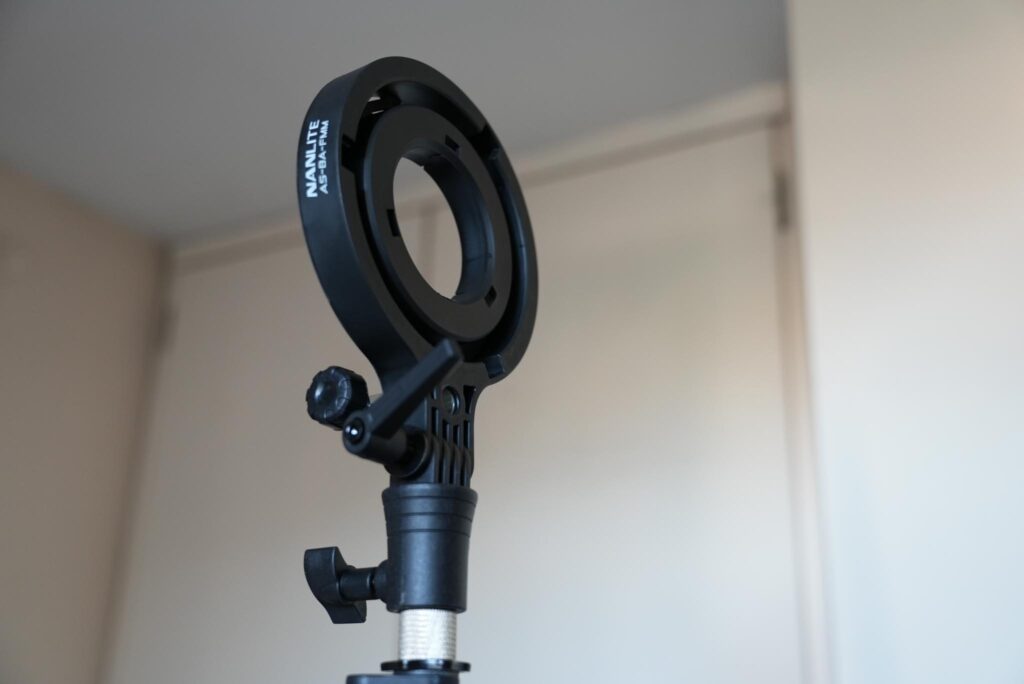
The Bowens adaptor is made out of plastic too, from the mount to the foot. I honestly don’t know if a 150-cm softbox would hold on to it. My Nanlite Forza Softbox SB-PR-90-Q and Nanlite FL-20G Fresnel Lens hold pretty well on it.
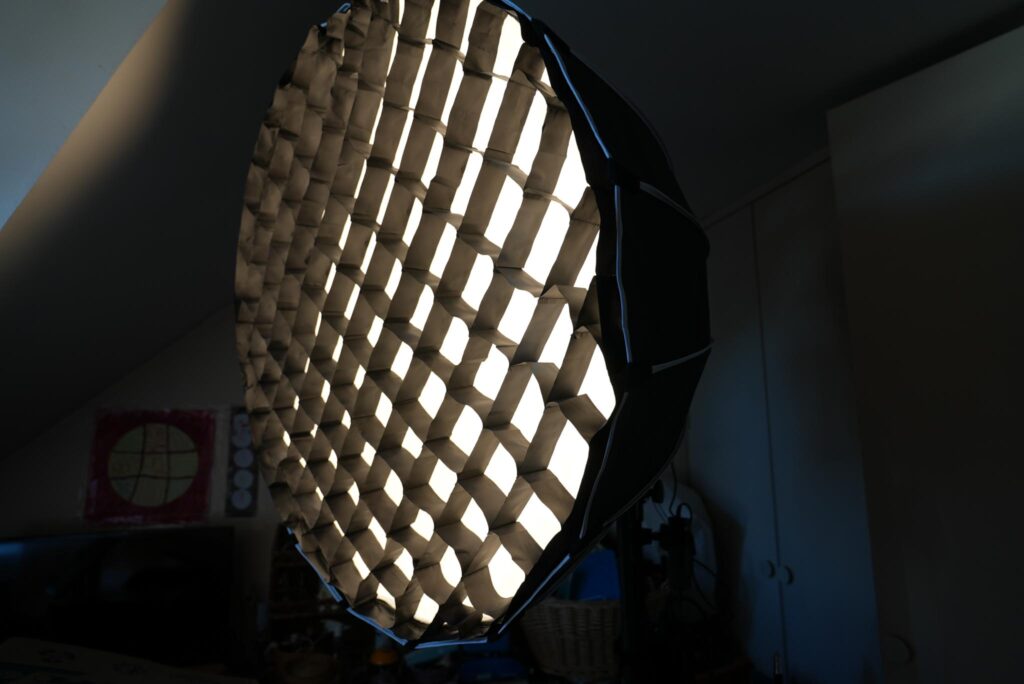
Maybe it’s just a feeling, and the unit will actually hold on better than the bigger units. Sometimes PVC or plastic does hold better to abuse.
How does it perform?
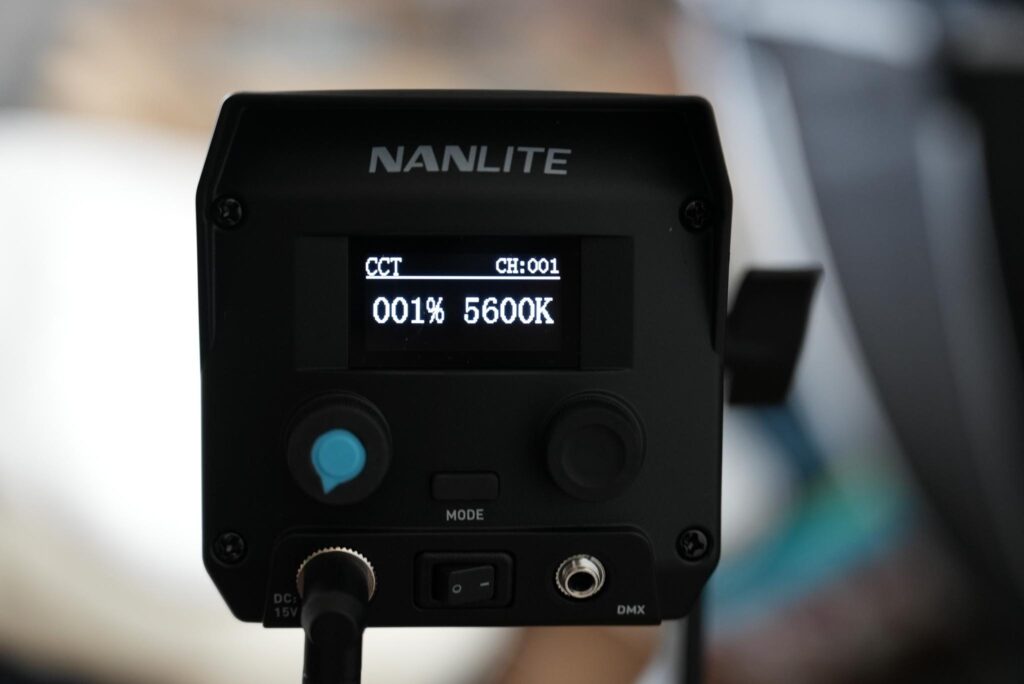
The Nanlite Forza 60B II is the light I should have bought in the first place. This unit is truly made to be handheld on the field. I think the Forza 150B also shares this portable aspect.
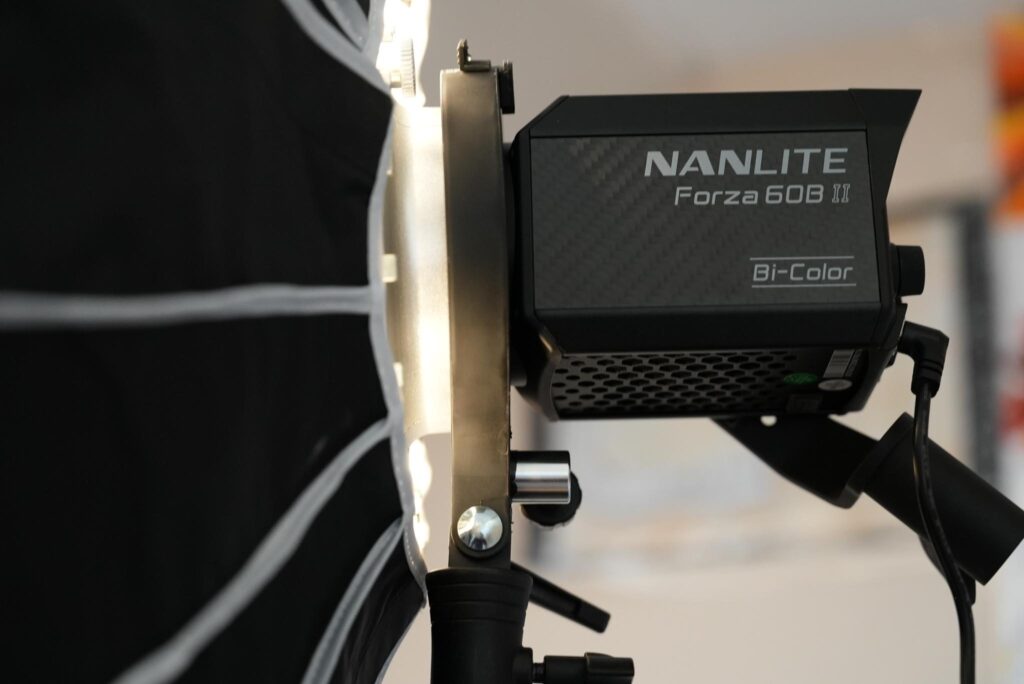
It’s honestly rare to use a light, even a small one, at 100%, especially indoors. Only if you bounce it or use diffusion can you crank it up to 100%.
This Forza 60B II is quite more powerful than I was expecting, especially with the reflector attached to it. I think it is more than adequate for interior scenes.
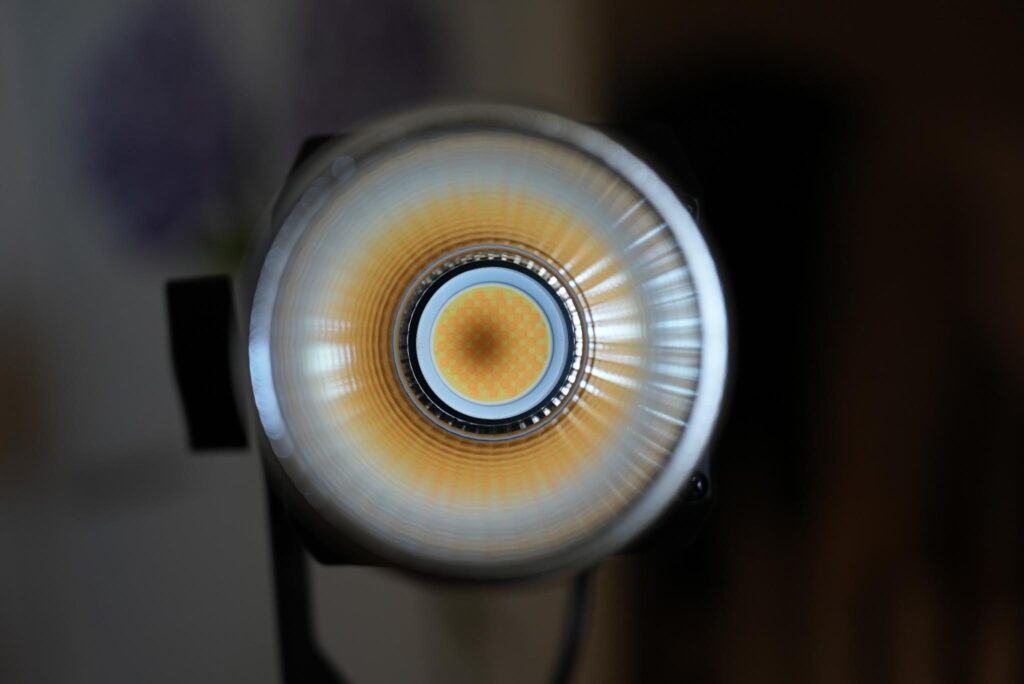
The unit is equipped with a cooling fan that makes quite some noise. It’s actually much louder than my 500B II at 100%.
I think since the unit is way smaller, the radiator inside has to be ventilated as much as possible. I think a microphone would definitely pickup the noise at 100%.
Is the light color accurate?
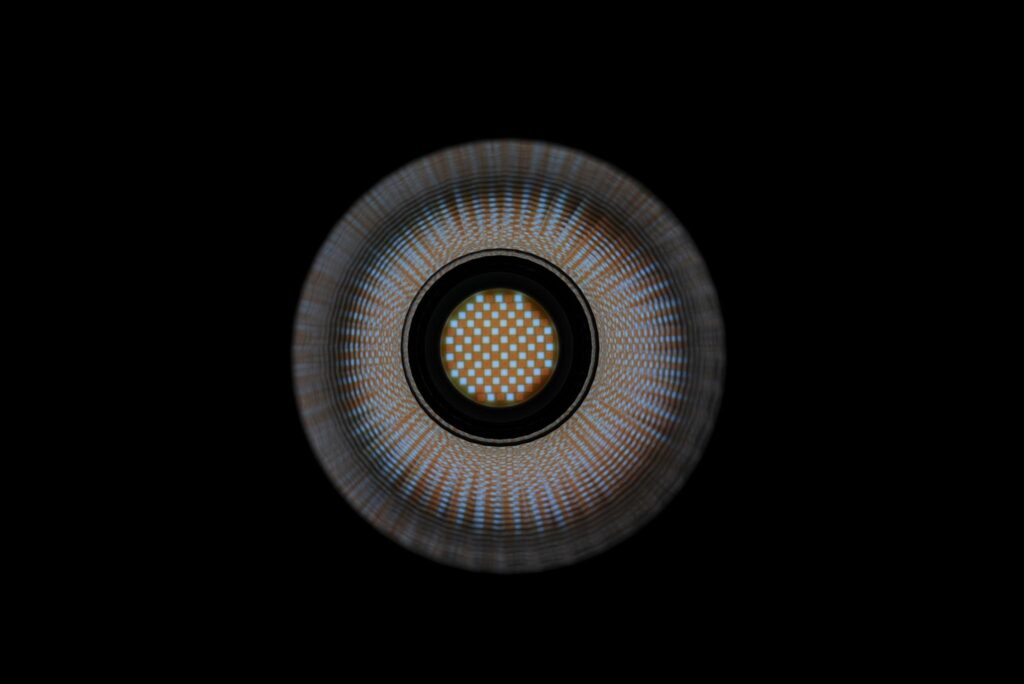
Again, I will not repeat myself for each light I review. You can refer to my review of the Nanlite Forza 500 B II to understand how lights are evaluated.
Now that you understand how it works, you can see the results of the measurement.
- CRI : 96
- TLCI : 98
- SSI : 83@3200K 74@5600K
I think outside of the improved output, the score should be fairly similar to the first generation in terms of color accuracy since no innovation has been done there.
Performances of DMX
I have never used DMX, so I would understand why someone would need to have these sorts of controls over the light. I am pretty straight-forward, as I am a beginner. Having good composition and lighting is already an achievement.
Real life applications
As you can see in this video, the Forza 60B II or Mark I, as a matter of fact, is more than enough to act as a keylight, even through a 90-cm softbox.
If this type of small light is more often used as a hair light, it’s a great thing that this small unit packs enough power to light a face through a softbox during the day.
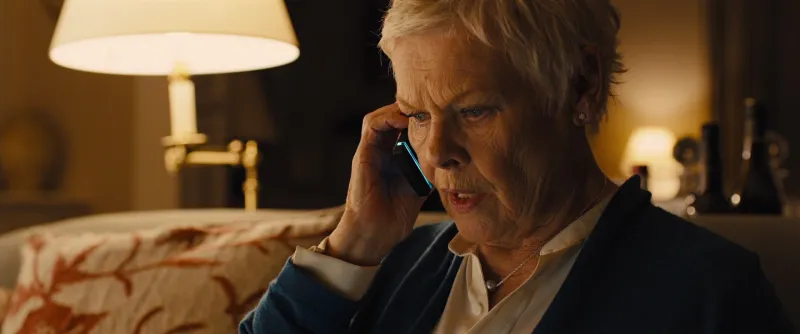
I am pretty positive this light could bounce out of unbleached muslin to reproduce the famous cove lightning popularized by Sir Roger Deakins himself.
This technique can be used at night as well as in daylight, as long as there is a light to motivate this light to wrap around the face.
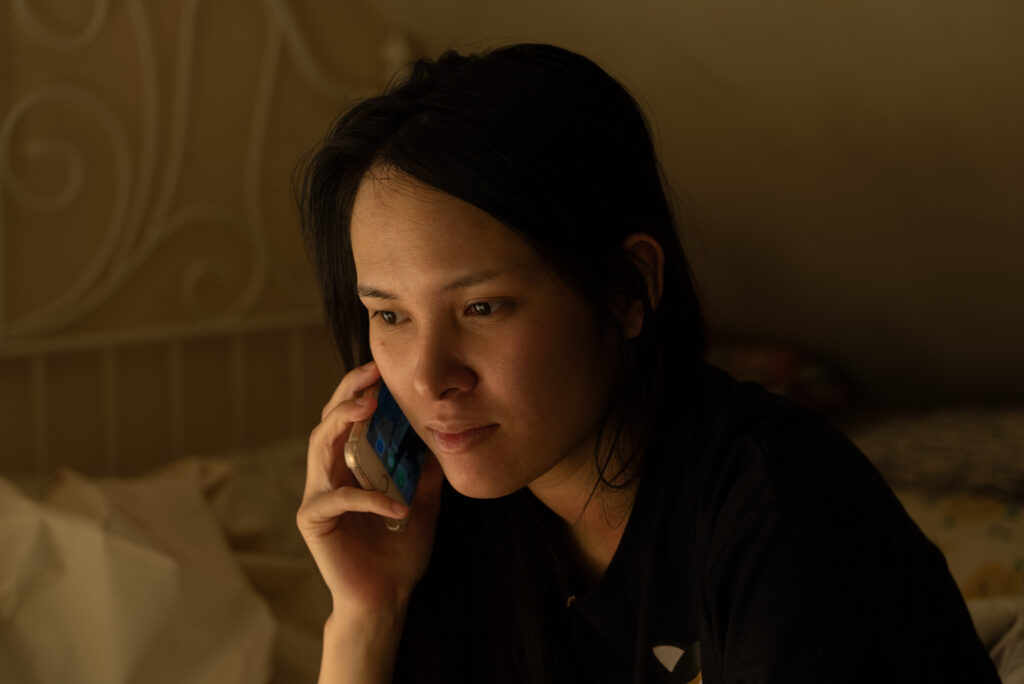
To achieve an effect like this, you usually need three lights and some practicals to achieve this lightning technique since the muslin has to really wrap around the face.
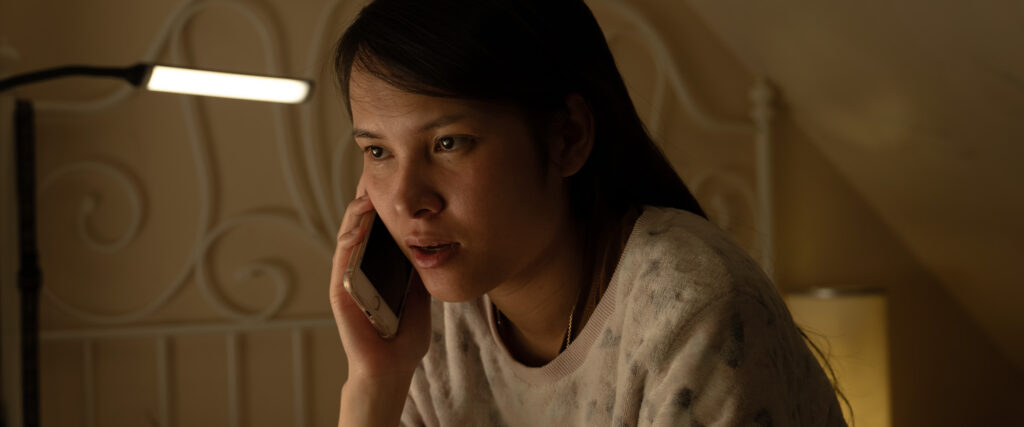
You’ll also need to flag the shadow side of the face to create a bit of contrast. Ideally, you would get what we call Rembrandt lighting, with a triangle of light on the cheek of the side in the shadow, generally the one closest to the camera.
This effect makes the light wrap around faces in the most flattering possible way without looking out of place.
Color accuracy
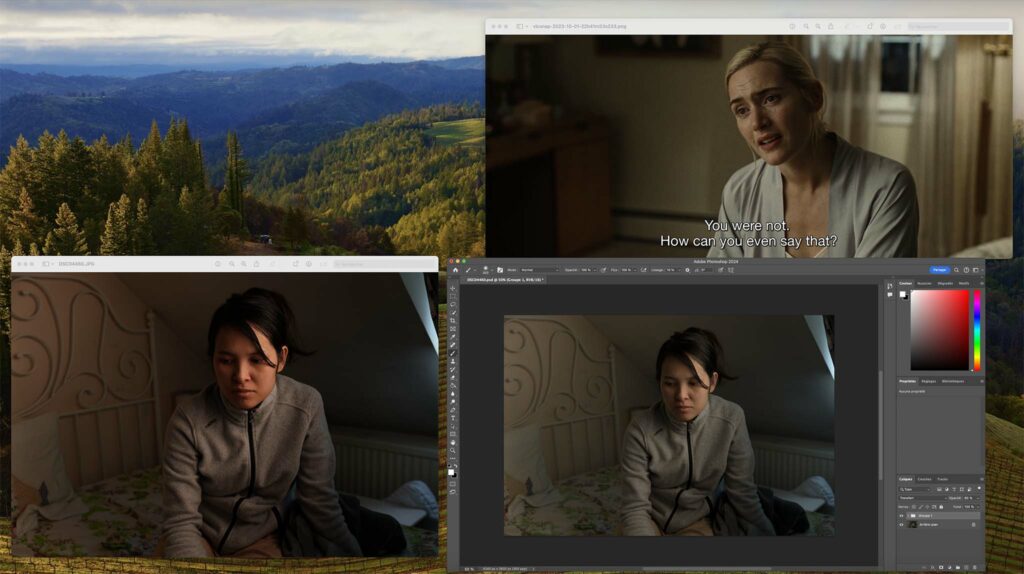
The color accuracy of the light seems to be slightly different than that of the Forza 500B II. Just by looking at it with the naked eye, you can see that both lights produce a different color even when both are set at 3200K.
The smaller Nanlite 60B II seems to have more magenta than the Forza 500B II, which is more yellow overall when set to a tungsten white balance.
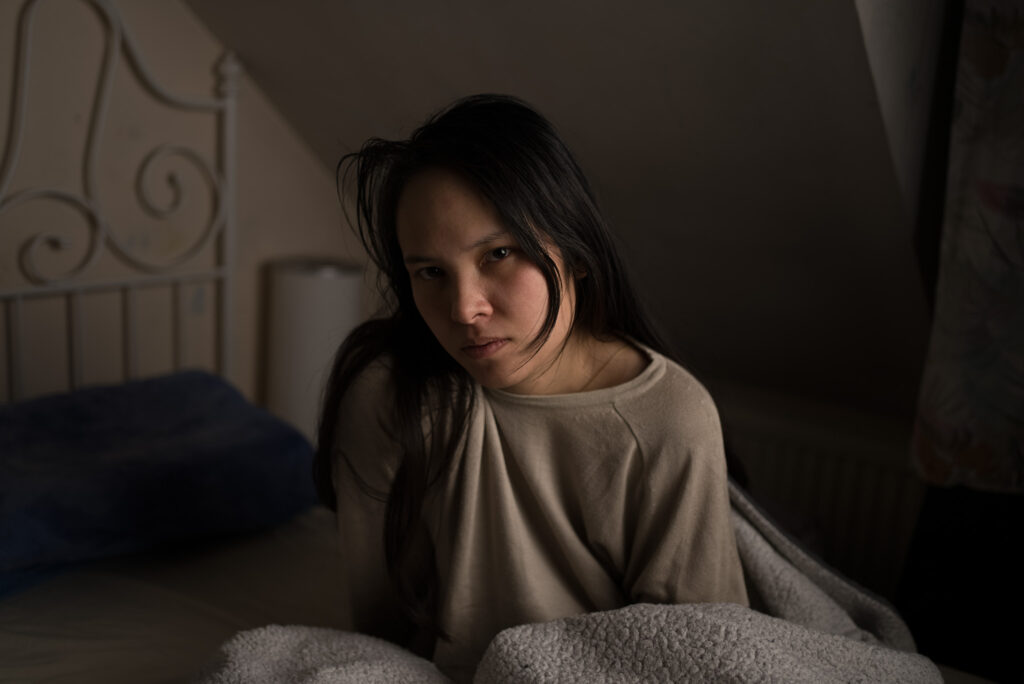
When taking a picture with a Sony A7S III, you can clearly see this magenta cast not only on the screens but also in the jpegs and raw files.
It’s very hard to get this golden yellow look that you would get with tungsten and celluloid film. I still don’t know if this is due to the light or the camera. My guess is that perphaps is a bit of both.
The file needs some post-production:
- Set the kelvin at around 3700K to keep the warmth.
- Set the picture color profile to Adobe Standard.
- Add more green to the tint (-8).
- Lower the red curve.
- Lower the blue curve.
In the video, the colors seem to be more in line with the Adobe standard profile, which is probably a Rec 709 color gamut.
The official numbers
- TLC 98 @3200K
- TM30 @3200K Rf: 94 Rg: 101
- SSI 83 @3200K
As you can see, LED lights, even with an SSI above 83 at 3200K, still need some color correction to look as good as a 3200K Tungsten bulb shot on film.
If LEDs, especially those of this size and range, are so much more practical than tungsten lights or HMIs, they still can’t produce the same quality of light.
Verdict
8.8 out of 10.
The Nanlite Forza 60B II is by far my favorite light. Even my 500B II has more power and is better built.
The thing I like the most about this light is its nimbleness. It’s a light that is very easy to get out of the bag setup on a cheap light stand to experiment with light.
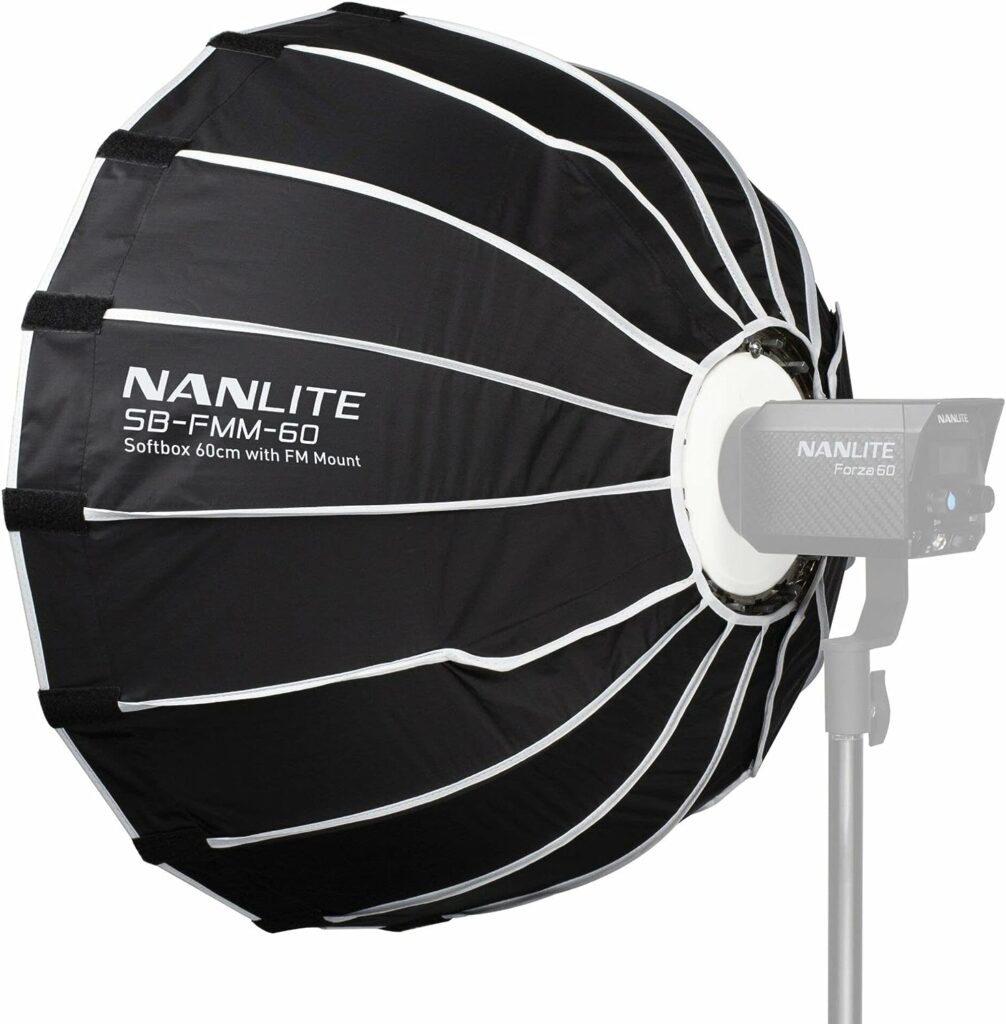
It also packs tons of power for its size, even though it’s hard to notice the intensity going up after 80%. Sure, it’s made out of plastic compared to an Aputure LS 60X, but at the end of the day, convenience trumps quality, especially when it comes to light that will not last forever anyway.
This is a piece of gear that I highly recommend, as well as a 60cm softbox and I would even consider buying another FM mount light like the 150B over the 300B II, which is so much less convenient.
Cons
One notable drawback of this compact 60-watt light concerns the Bowen’s mount adapter, which is constructed entirely of plastic and can be challenging to securely lock into place.
However, it’s worth mentioning that the adapter is included in the package, which is a positive aspect. Nonetheless, it would be preferable if it provided a more secure attachment.
Informations
Nanlite Forza 60B II
Website: https://nanlite.com/
Page of the product: https://nanlite.com/product-forza-60-60b-ii?t=1695242840624#/en/Forza-60/60B-II
Facebook page: https://www.facebook.com/nanlitelighting/
YouTube page: https://www.youtube.com/c/NanliteGlobal
Our video production in Paris: https://www.neonnight.fr
Samples using the Forza 60B II :
Packshots
https://www.neonnight.fr/en/portfolio/viwone-packshots-dark
https://www.neonnight.fr/en/portfolio/viwone-packshots-bright
Studio Portraits
https://www.neonnight.fr/en/portfolio/viwone-create-together-drip


GIPHY App Key not set. Please check settings
4 Comments